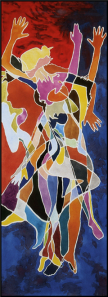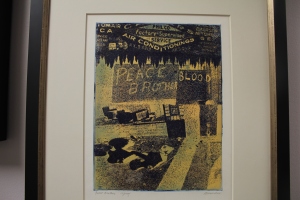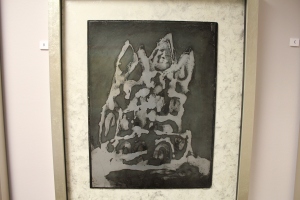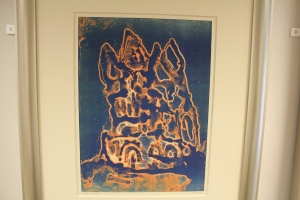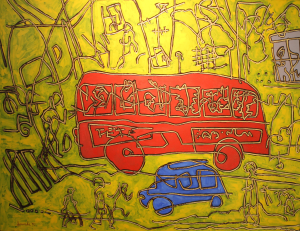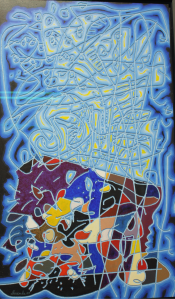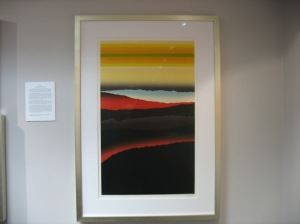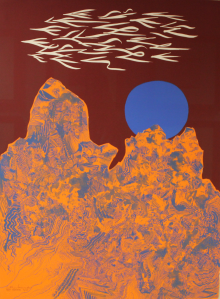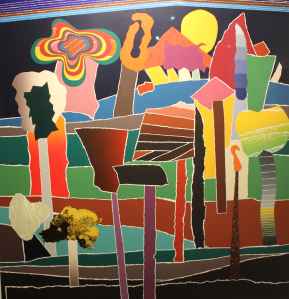Within the manuscripts was another neat addition to our collection, an interview and behind the scenes documentary explaining why Arthur chose to create paper in the traditional method and how it contributed to his work.
Why would a contemporary artist be interested in doing this? Well, Arthur viewed it as an art form itself and specifically came to France because that location marked the beginning of the tradition. The paper mills in the United States were simply influenced by French paper making.
Further into the interview, the difference between working in rather than on paper is discussed. Specifically, while working on paper it loses its identity with the image becoming the dominating presence. On the other hand, the pate form of paper can resemble both a two and three dimensional format, painterly and sculptural. In addition, Arthur considers his torn paper collages to possess a unique quality, again relating to sculpture.
Arthur decided to defy the usual procedure and actually mixed the colors of his choosing and poured them directly onto the mold. This experiment left him guessing how everything would turn out, would the colors blend together and would they bleed? Curiosity and worry greeted Arthur at the end of the day, his anticipation would grow through the night and into the morning when he could see the final result.
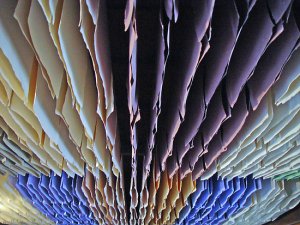
from ih3.redbubble.net



